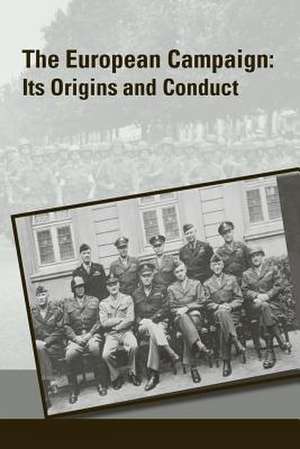The European Campaign
Autor Strategic Studies Instituteen Limba Engleză Paperback
Preț: 146.34 lei
Nou
Puncte Express: 220
Preț estimativ în valută:
28.00€ • 29.18$ • 23.19£
28.00€ • 29.18$ • 23.19£
Carte disponibilă
Livrare economică 13-27 martie
Preluare comenzi: 021 569.72.76
Specificații
ISBN-13: 9781505409253
ISBN-10: 150540925X
Pagini: 464
Dimensiuni: 152 x 229 x 24 mm
Greutate: 0.62 kg
Editura: CREATESPACE
ISBN-10: 150540925X
Pagini: 464
Dimensiuni: 152 x 229 x 24 mm
Greutate: 0.62 kg
Editura: CREATESPACE
